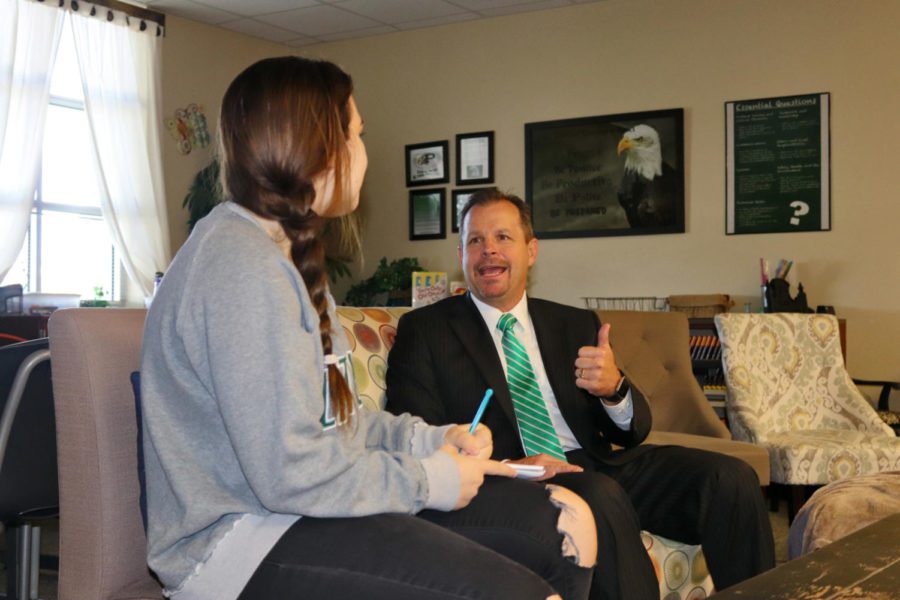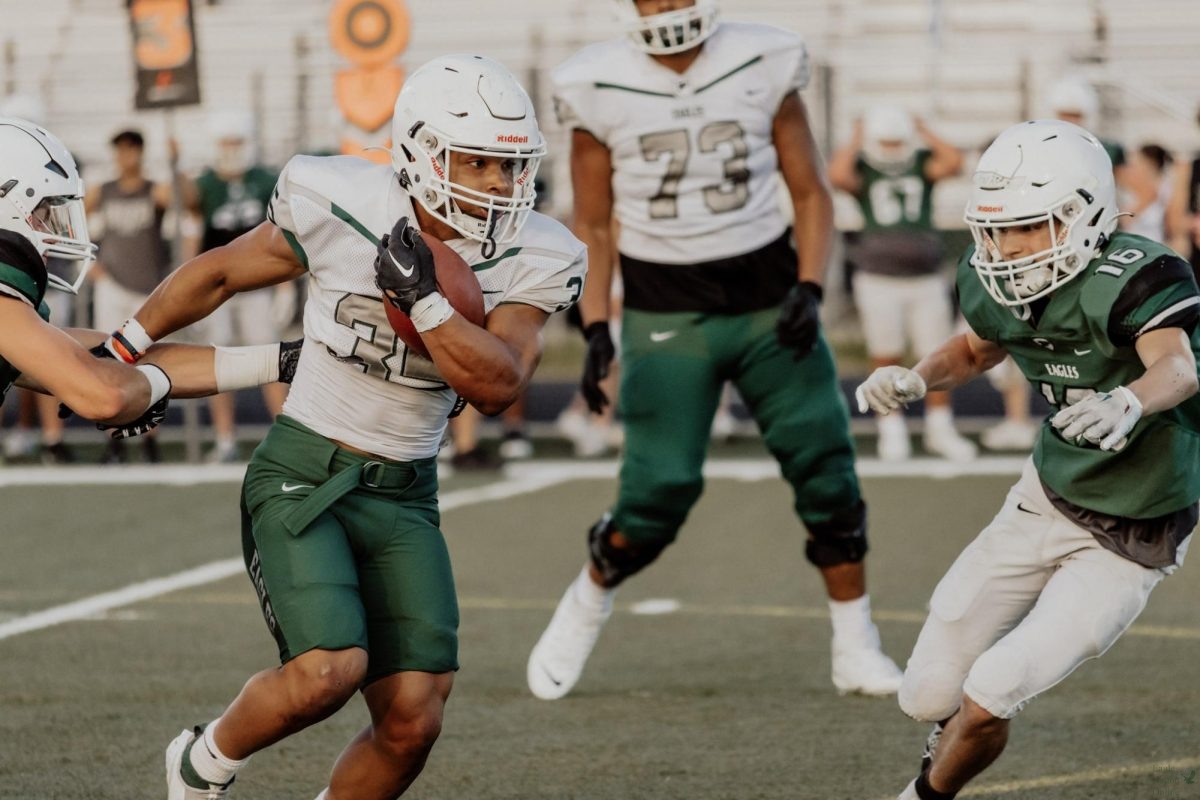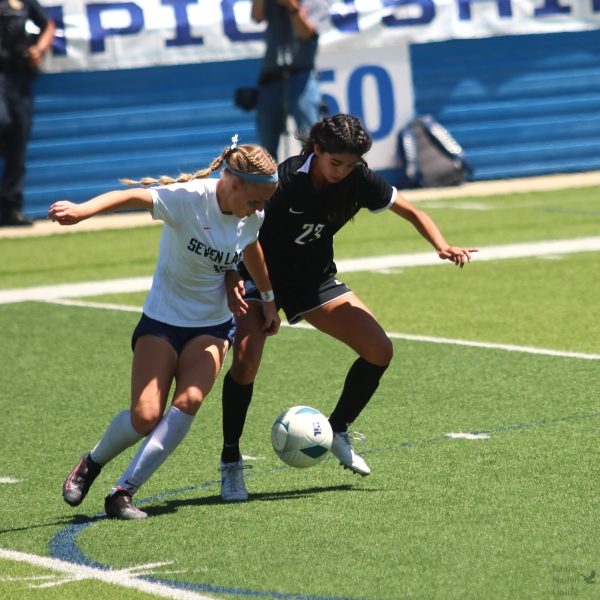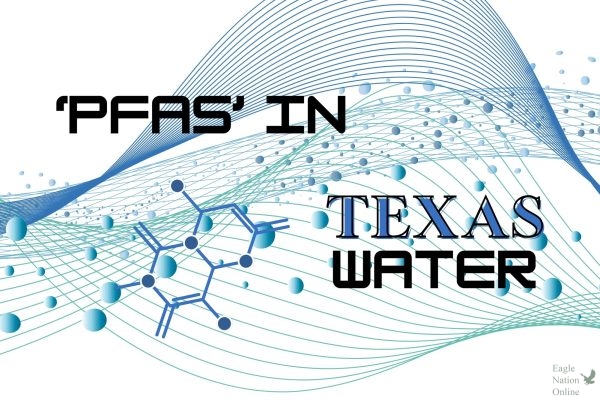High school students face traffic jams as community grows
In an Eagle Time interview on Thursday, Aug. 30, Katie Johnson asks superintendent Dr. Drew Watkins to provide tips for students on how to avoid traffic issues. One of his tips included leaving earlier to get to school. “We’re at Capacity,” Dr. Watkins said. “I encourage students to start earlier. Give yourself adequate time, and everybody needs to assume people won’t always follow the traffic laws.”
September 10, 2018
As the district’s enrollment continues to soar, including 2,301 new students, traffic congestion continues to do the same.
Traffic congestion on Coleman, the main road used to get to the high school, has students and parents waiting up to 25 minutes at peak traffic times to enter or leave the campus.
“We’re at capacity,” superintendent Dr. Drew Watkins said. “We don’t build roads. We are at the mercy of the city. Eventually, the town will catch up.”
The superintendent did have advice for students having to navigate the traffic-packed roads to school.
“I encourage students to start earlier,” Watkins said. “Give yourself adequate time, and everybody needs to assume people won’t always follow the traffic laws.”
A change in the busing policy for neighborhoods within two miles from school has more students walking to school than ever. Drivers also are being forced to be more aware of the increased pedestrian-traffic and to be on the lookout for pedestrians crossing at Prosper Trail and on Coleman by the high school.
“Traffic on Coleman is really bad, and it takes me forever to get to and from school,” sophomore Hayden Turner said.
Car accidents, bad weather, and the train also impact traffic congestion and flow in the area. For students who live west of Coleman Street, the train can significantly impact the wait time.
“I could use the time spent waiting in traffic doing more important stuff,” Turner said.
Prosper ISD police officers Christopher Reeves and Darrell Terry direct traffic every day regardless of the weather conditions. High school officers offered these tips to alleviate congestion.
“Pick kids up at the cafeteria entrance,” Reeves said. “Try leaving that way. If possible, students should ride a bike or walk to school, stay off their cell phones, and use their blinkers.”
Coming to school early, or leaving late are options to avoid waiting in traffic. Instead of sitting in traffic, students can get one-on-one time with teachers, or meet in small groups.
“Leave the campus around 4:23-4:25 to avoid the major traffic jams,” Terry said.
Prosper High School offers tutorials every day before and after school, as well as an optional ‘Zero Period,’ which meets daily from 7:30 a.m. to 8:15 a.m, and a ‘ninth period’ which meets Tuesdays, Wednesdays, and Thursdays from 4 p.m. to 5:15 p.m. This extra school time provides students with a way to get homework done while waiting for the traffic to subside.
“I understand though why the traffic is bad, and that there isn’t much Prosper ISD can do about it,” Turner said. “Hopefully, the city will do something to accommodate us soon.”
Law requires students view police interaction video prior to graduation

























